Government Chatbots: Top Benefits & Use Cases in 2024
Chatbots are designed to streamline interactions between people and services, by increasing the ease of use and facilitating the execution of tasks. Chatbots exist in several industries such as mental health, retail, real estate, travel, customer service, B2B transactions, insurance sector, and more.
Chatbots are also useful to inform the public about certain issues or to help handle their queries. In this article, we will look at benefits, use cases, and case studies of government chatbots.
What are the benefits of government chatbots?
The following are some of the benefits of government chatbots:
- Easy navigation: Chatbots can help citizens easily navigate through government websites portals by providing them direct links.
- Availability: Chatbots’ 24/7 availability means citizens can access the relevant information or ask their questions day and night.
- Efficient and economical: Chatbots offer instant responses. This reduces time wastage. Moreover, employing a chatbot costs 30% less than hiring a live agent.
- Consistency in answers: Because chatbots use a command catalogue to leverage their answers from, they will always provide the same, pre-approved answer to the same question. This avoids confusion amongst the public, and minimizes the spread of false information.
What are the use cases of government chatbots?
The following are some of the use cases of government chatbots:
- Tax information: Citizens can ask government chatbots about tax filing forms, deadlines, and other tax-related queries..
- Public information: Chatbots can provide the public with general, useful information, such as upcoming construction plans or public offices’ operating hours.
- Transit information: Without requiring the user to visit many portals, chatbots can display public transit timetables immediately.
- Event and happenings’ information: Government chatbots can give information on upcoming festivals, flea markets, or other happenings of such nature.
- Business permits inquiries: Entrepreneurs thinking of starting a business can ask government chatbots’ about local governments’ rules and regulations for business permit issuance.
- Public health information: Users can ask the chatbots about public health measures and other related health information.
- Immigration issues: Immigrants can follow up on their application status or pose any general question they might have, such as the correct type of form that they need to fill.
What are some case studies of government chatbots?
The top case studies of chatbots in government and public sector service include:
Department of HomeLand Security, USA: EMMA
EMMA is a chatbot developed for the U.S. Citizenship and Immigration Services of the Department of HomeLand Security. It caters to one million applicants per month, and is able to handle requests in both English and Spanish. Its capabilities include answering questions about immigration services, green card acquisition process, passports, and other services that USCIS offers.
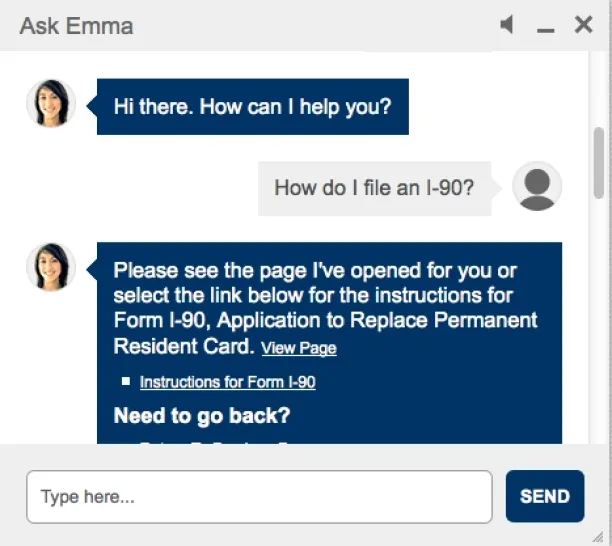
Government of Mississippi State Chatbot: MISSI
MISSI is a chatbot for the state of Mississippi. It answers residents’ questions about taxation, health services, public transport schedule, elderly care centers, social gatherings, tourism hotspots, and possible job opportunities.
Government of San Francisco’s Chatbot: PAIGE
Procurement Answers and Information Guided Experience (PAIGE) is a San Francisco Procurement chatbot application for internal workers. It is powered by Facebook’s NLP platform and is intended to assist the employees of San Francisco’s government with their digital/IT procurement.
Government of Kansas City Chatbot : OpenDataKC
The Kansas City government created OpenDataKC to help its citizens navigate through its vast open data portal to get the information they want without having to navigate through the website.
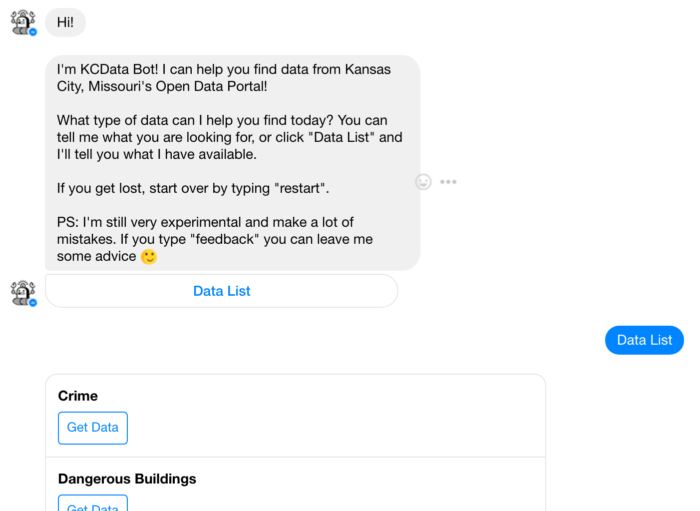
General Services Administration, USA: Mrs. Landingham
“Mrs. Landingham,” named after a fictional character on a TV show, is the U.S. General Services Administrations’ HR chatbot for guiding new hires through their onboarding processes, such as, filling forms, scheduling meetings, and more.

Government of Dubai’s Chatbot, Rammas
RAMMAS is Dubai’s Electricity & Water Authority’s chatbot that was launched on the Google AI platform and is available on their website, iOS, Android, Amazon’s Alexa, and Facebook. Since its launch in January 2017, the Government of Dubai claims that RAMMAS successfully processed 700,000 requests helping people pay their bills, get their questions answered, and navigate through the website.
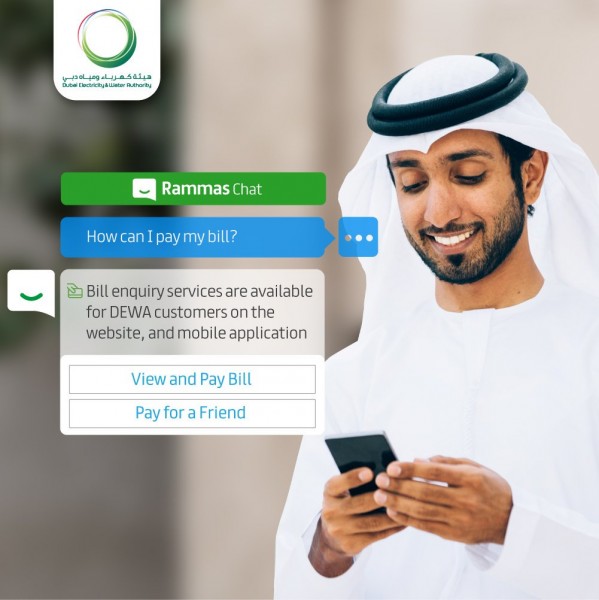
Government of Singapore Chatbot: Gov.sg
Gov.sg is Singapore’s Ministry of Communications and Information’s Facebook messenger chatbot. It gives residents information about government agencies, news, press releases, workforce, complaints, public service outages, and public health data.
Government of Australian Chatbot: Alex
“Alex” is the Australian Taxation Office’s chatbot. It’s intended to help people and corporations through their tax and legal issues, such as intellectual property (IP) rights, tax filings, income, and deductions.
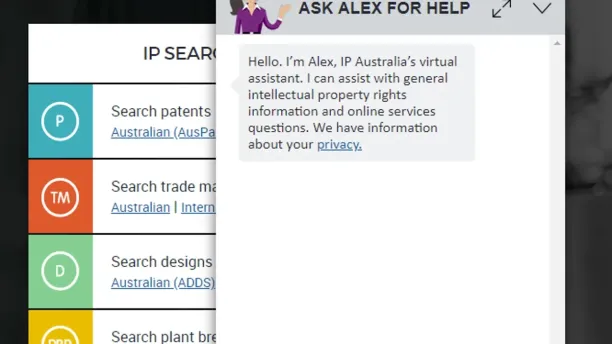
For more on chatbots
If you are interested in learning more about chatbots, read:
Moreover, if you believe your business could benefit from adopting a chatbot application, check out our chatbot platform, where we have data-driven lists of vendors.
And we can guide you through the process:

Cem has been the principal analyst at AIMultiple since 2017. AIMultiple informs hundreds of thousands of businesses (as per similarWeb) including 60% of Fortune 500 every month.
Cem's work has been cited by leading global publications including Business Insider, Forbes, Washington Post, global firms like Deloitte, HPE, NGOs like World Economic Forum and supranational organizations like European Commission. You can see more reputable companies and media that referenced AIMultiple.
Throughout his career, Cem served as a tech consultant, tech buyer and tech entrepreneur. He advised businesses on their enterprise software, automation, cloud, AI / ML and other technology related decisions at McKinsey & Company and Altman Solon for more than a decade. He also published a McKinsey report on digitalization.
He led technology strategy and procurement of a telco while reporting to the CEO. He has also led commercial growth of deep tech company Hypatos that reached a 7 digit annual recurring revenue and a 9 digit valuation from 0 within 2 years. Cem's work in Hypatos was covered by leading technology publications like TechCrunch and Business Insider.
Cem regularly speaks at international technology conferences. He graduated from Bogazici University as a computer engineer and holds an MBA from Columbia Business School.
To stay up-to-date on B2B tech & accelerate your enterprise:
Follow on
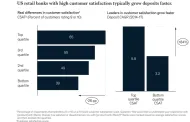
Comments
Your email address will not be published. All fields are required.